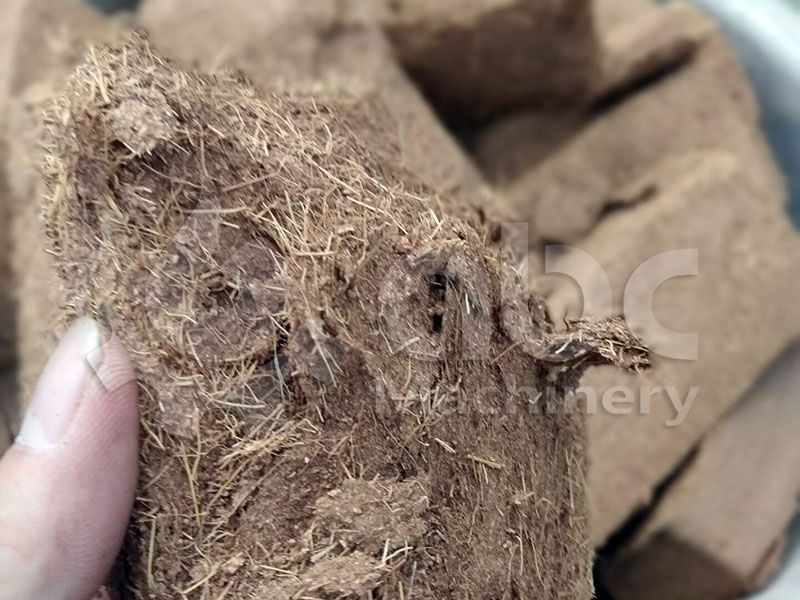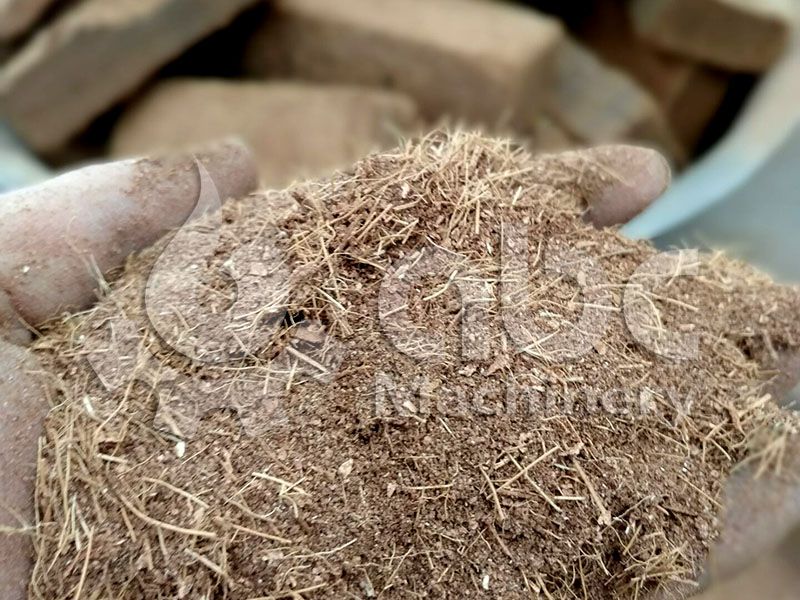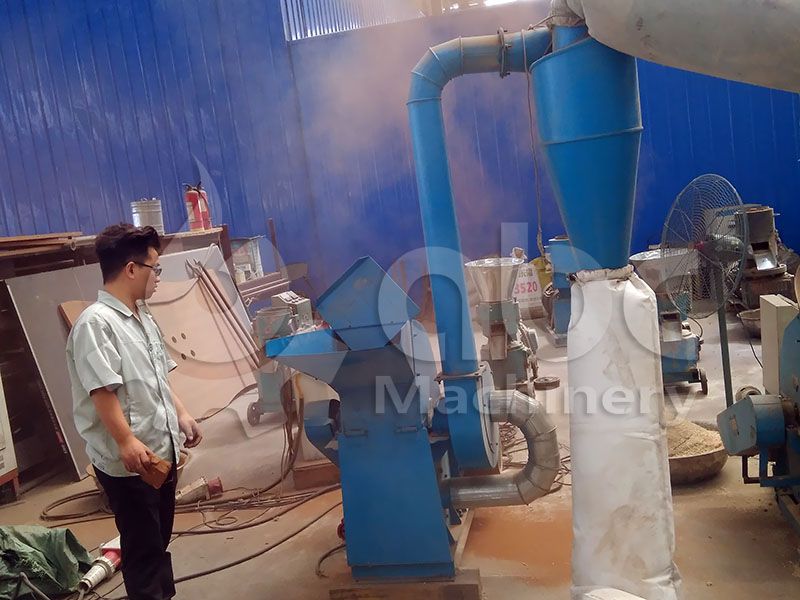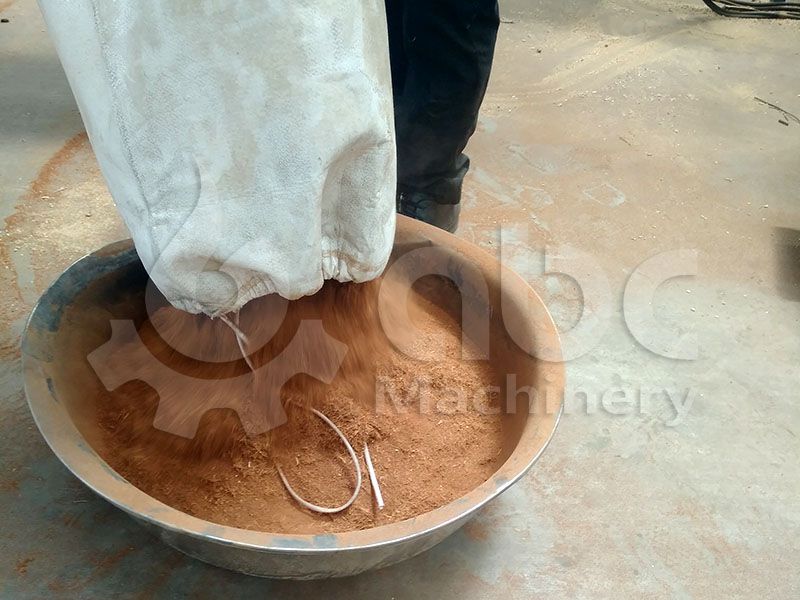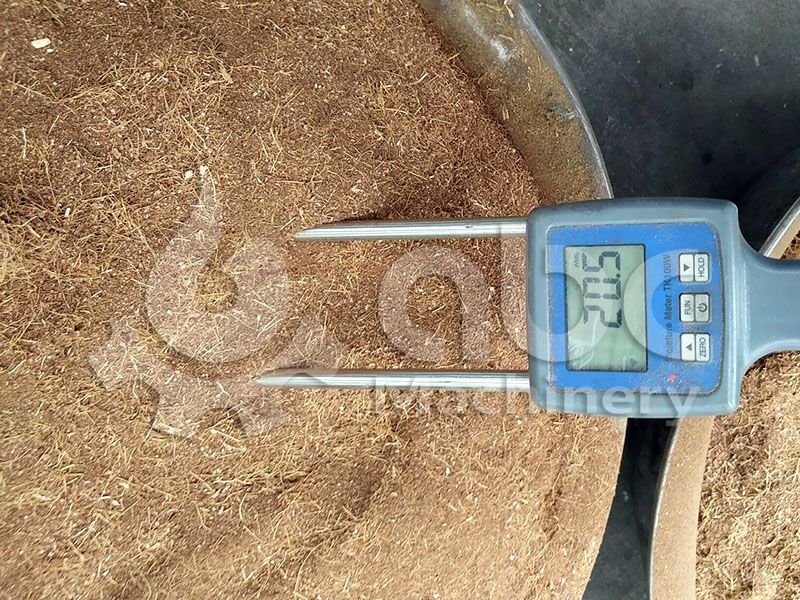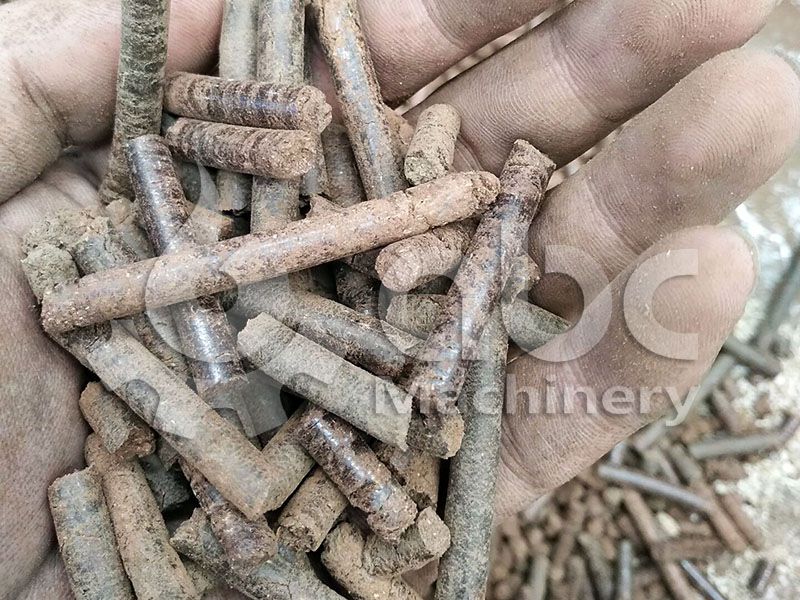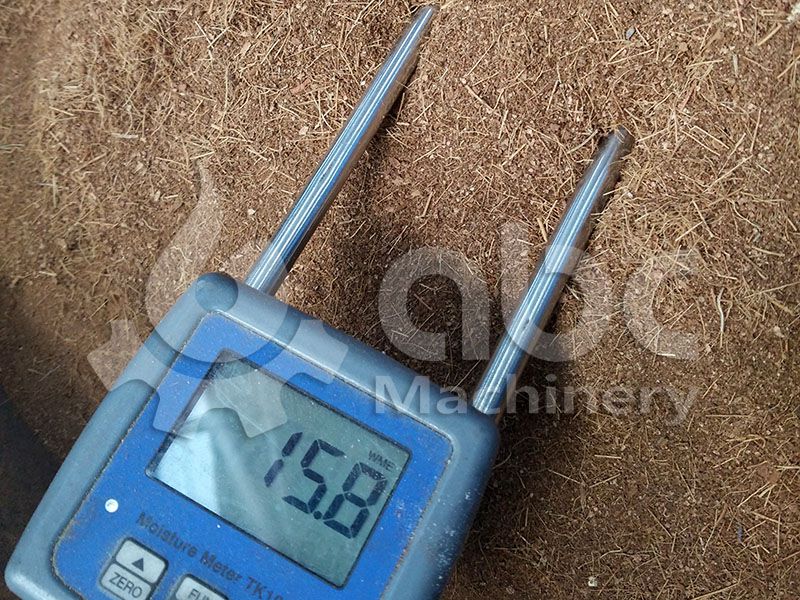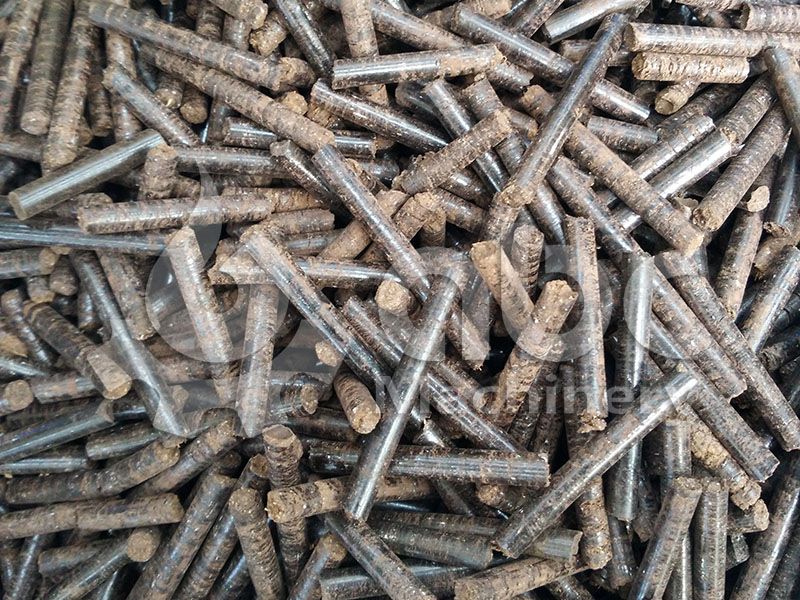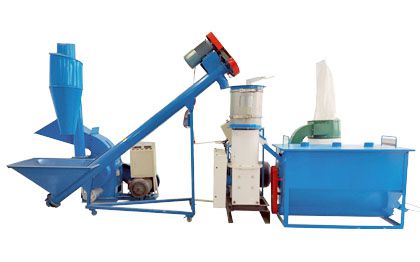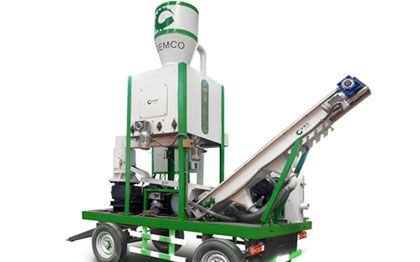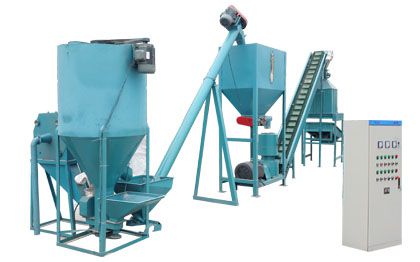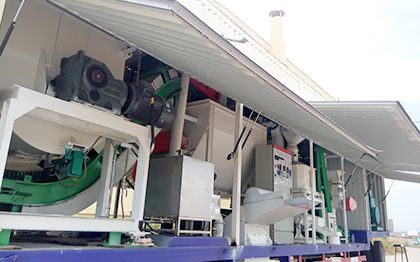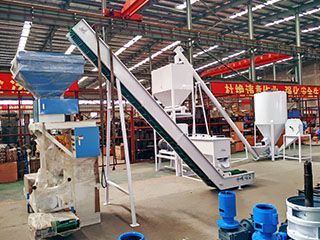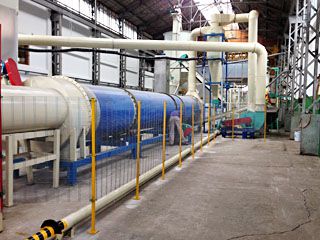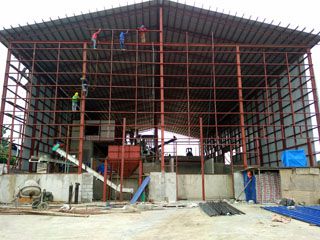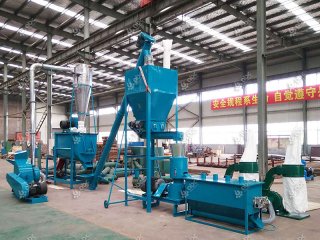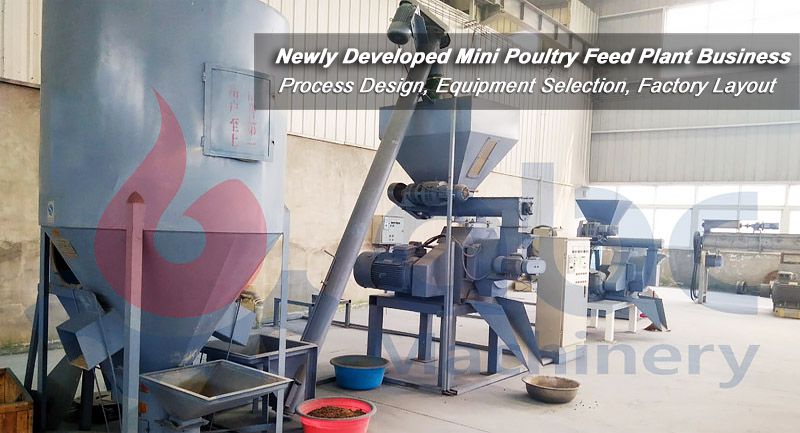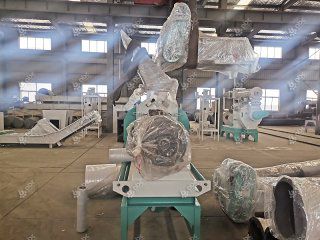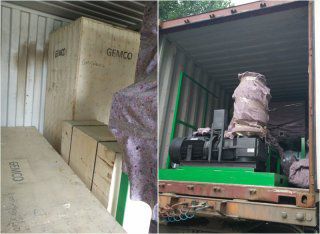
Make Coconut Shell Pellets
ABC Machinery receives raw materials from customers for pellet making testing. Recently we received coir pith from a customer in Thailand and did a series of coconut shell fiber tests. View the brief test result below to understand the granulation effect of coconut shells. For any question on making pellets from coconut shells, feel free to get in touch with us and we are always glad to help you out!
Coir pith is the main coconut residuum which also known as coconut coir, coco peat and coir fiber. The pellets made from coir pitch have a wide application, and the main uses are listed below:
- Animal Litter
- Growth Medium
- Seed Carrier
- Soil Conditioner
Test Report of Pelletizing Coconut Shell Fiber
- Test the molding effect of coconut shell fiber processed by flat die wood pellet mill.
- Test the best compression ratio for pelletizing coconut shell fiber.
- Test for optimum moisture for making high quality coconut shell pellets.
| Test No. | Model of Pellet Mill | Pellet Die Size (Diameter x thickness) | Moisture Content (%) |
|---|---|---|---|
| Test 01 | ZLSP 300R | 6mm x 27mm | 20.5% |
| Test 02 | ZLSP 300R | 6mm x 31.5mm | 20.5% |
| Test 03 | ZLSP 300R | 6mm x 33mm | 15.7% |
Coir pith pellets are made from the coconut's fibrous husk (known as coir) that is bound together by lignin (known as pith), by using a pellet machine. The resulting coir pith pellet is reduced in size by about 30%~60% over the same amount of coir pith in an uncompressed form, making it easier to transport than uncompressed coir.
The moisture content of coconut coir can be considerably difference. It depends on how long the coir has been sitting and the storage conditions. For example, the moisture content of fresh coir pith is around 45%. While it can be below 10% for the coir which has been sitting for an extended period of time in a dry climate. If the coir is too dry, it may have difficulty sticking together when making pellets. So, water or steam may be added.
Test Video: Coir Pith Pelletizing by 300R Pellet Machine
Test Conclusion
- There will be a little powder when making pellets from coconut shell fiber. It is suggested to add a small amount of oil during the granulation process to reduce powder residue and improve pellet quality.
- The pellet forming rate can be improved by reducing the moisture content appropriately.
- Except pellet die size and water content, the compression ratio is also the key factor to making high quality coconut shell pellets. If you are interested in getting the detailed pelleting test report with compression ratio, feel free to send us an inquiry!
Interested in making coconut shells into pellets? contact us for more information!
Wide Application of The Produced Coir Pith Pellets
The husk of the coconut is formed of long fibers (coir pith) and small, dust-like particles. The coir fibers are the main component. Coconut husk or shell is a natural by-product of the coconuts processing industry. The coir fibers are used for making rope and fabrics…previously. In recent years, it has been discovered that coir pith has numerous other uses including soil supplement, animal litter, growth medium and fuel resource.

Uses of Coir Peat Pellets
Before pelletizing, the coir pith could be mixed with some additives for different applications. The additives might be fertilizer, binding agent, insecticide, weed killer, clay, seeds, or fire enhancer, etc. Pelletized coir pith is easy for transport and convenient to use.
-
Coir Pith Pellets as Soil Supplement
Coconut coir can be a valuable soil supplement which not only adds nutrients to the soil, but also helps to retain water for plants. By adding coconut coir pellets to the soil, the soil can be enhanced with additional nutrients, while improving moisture and aeration capacity. It is widely applied to enhance vegetable gardens, to promote reclamation of environmentally damaged sites, and to minimize the negative environmental effects of mining. Fertilizer additives can be added to the coir pith pellets. It could be natural fertilizers such as nitrogen mixtures, or chemical fertilizers such as steer manure and chicken manure.
-
Coir Pith Pellets as Animal Litter
Because of its exceptional properties as an absorbent, pelletized coconut coir has also been found to be a good choice as animal litter. It can absorb up to 9 times of its weight in liquid while minimizing odor. Besides, the pellets is also effective in absorbing printer ink, surplus or spilled paint, etc.
An odor controlling compound might be added as an additive in animal litter or bedding pellets. It could be conventional deodorants, zeolite, gypsum, fruit or fruit by-products. For example, citrus peels can be added to mask or absorb odors.
-
Coir Pith Pellets as Growth Medium
Coco coir pellet is also known as a popular type of growth medium. Coco coir growth medium is a 100% biodegradable which is natural and safe for growers. By adding water, the coir pellets expand to a growing medium easy to work with.
Besides, seeds can also be added to the coir pellets. The coconut coir pellets can then be mixed with soil to serve as a growth medium for the seeds. In the alternative, the seed laden pellets can be applied to the top of soil. Thus, the seed laden coconut coir pellets can be used to plant flower gardens or lawns simply by spreading the pellets on the soil. Additionally, the seed laden coconut coir can be used in efforts to replant areas burned by fires, etc. Because of the coconut coir's ability to absorb and hold water, the coir can increase the ability of rapidly producing plants to minimize erosion, etc.
-
Coir Pith Pellets as Fuel Resource
Sometimes, the coconut coir pellets are used to clean oil or other hydrocarbons, or as a retaining medium for used motor oil. Once collected, the oil impregnated coir can be incinerated, thereby providing a fuel source which can be used in pellet burning stove for heating, while eliminating the environmental problem of oil disposal. In this case, fire enhancer could be added to facilitate burning of the coconut coir after it has been used to absorb a fluid.

Coconut Coir Pellet Fuel
Why Turn Coir Pith into Pellets?
Pelletizing process eliminates the disadvantages traditionally associated with coconut coir without appreciably increasing its cost!
The dust-like nature of coir pith limits the practicality of coconut coir for other uses. The dust can be tracked into other areas of the house by a cat. Likewise, the horses can kick up the dust and create dusty conditions in a barn. The pellets prevent the coir pith from being blown by the wind, or from being carried away by animals.
TOP 5 Countries of the World's Coconut Production
The coconut is a tropical tree species, mainly grown and harvested by small-scale farmers. Production of coconuts is concentrated on island and coastal areas, such as Fiji and Samoa, as well as in the humid tropics, such as India, the Philippines, Thailand and Indonesia.

Coconut Production
| Rank | Country | Coconuts Produced (tons) |
|---|---|---|
| 1 | Indonesia | 18,300,000 |
| 2 | Philippines | 15,353,200 |
| 3 | India | 11,930,000 |
| 4 | Brazil | 2,890,286 |
| 5 | Sri Lanka | 2,513,000 |
| 6 | Vietnam | 1,303,826 |
| 7 | Papua New Guinea | 1,200,000 |
| 8 | Mexico | 1,064,400 |
| 9 | Thailand | 1,010,000 |
| 10 | Malaysia | 646,932 |
| 11 | United Republic of Tanzania | 530,000 |
| 12 | Myanmar | 425,000 |
| 13 | Solomon Islands | 410,000 |
| 14 | Vanuatu | 410,000 |
| 15 | Ghana | 366,183 |
- No. 01 Indonesia
- No. 02 Philippines
- No. 03 India
- No. 04 Brazil
- No. 05 Sri Lanka
The world's fifth largest coconut producer. Sri Lanka trails just behind Brazil with annual production around 2,513,000 tonnes. Due to the warm and sunny climate, Sri Lanka is ideal for coconut growth.
- Besides pelletize coir pith, can the 320R pellet mill also make leaf and branch pellets?
- Yes, you need to crush the leaves and mix them with some wood chips for better pellet making effect. Or you can send us some raw materials for testing.
- About the 300 type small flat die moving disc pellet mill, is it possible to reduce the rotational speed of the die plate to 210-240r/min?
- The current standard state rotational speed is 221r/min.
- Why is the color of your machines’ abrasives inconsistent?
- Some are black and some are yellow, yellowing is similar to rust is some stock when coated with anti-rust oil, after a long time air-drying oil stains are dirty similar to rust, in addition and heat treatment manufacturers have a relationship, some heat treatment after black, some gray.

